How Montessori Sensorial Materials Support the Scientific Method
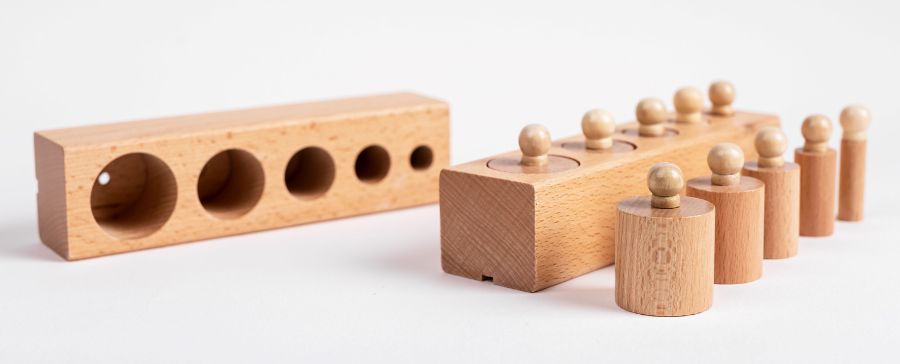
In Montessori training, a lot of time is spent learning about the different purposes of the Montessori activities. Each activity has an external aim and an internal aim. The external aims are what most adults easily see: did the child really learn how to zip up their clothes or wash the table? The internal aims focus on the ways the activity helps children’s natural development. Examples of internal aims include developing the child’s concentration, preparing a child for writing, or helping a child develop a mathematical mind. Many of the materials and activities help promote a scientific mind as well, and this becomes more evident in the Montessori sensorial materials. The design of the Montessori sensorial materials provide the child with a deep internal appreciation of the scientific method.
Table of Contents
- The Scientific Method
- The Montessori Sensorial Materials
- The Cylinder Blocks and the Scientific Method
- Learning the Scientific Process Through the Use of Montessori Sensorial Materials Benefits Children in Future Grades
- Try Montessori Laboratory’s Hands-on Science Lessons for Free
The Scientific Method
Before looking at how Montessori sensorial materials help develop the child’s appreciation of science, it would help to look first at what the scientific method is. The scientific method is a process used to obtain or verify information through experimentation and testing. There are 5 steps to the scientific method:
- Observation: we develop testable questions based upon what we observe.
- Hypothesis: we make a prediction of what will happen.
- Experimentation: we gather data and information.
- Analysis: we analyse the data and information we gathered.
- Conclusion: we decide whether the data and information support or negate the hypothesis, and can then accept or modify our predictions.
The Montessori Sensorial Materials
There are many Montessori activities in the classroom that children can choose. These materials aid in different areas of education, including practical life, education of the senses (sensorial materials), math, language, and cultural studies. The Montessori sensorial materials focus on refining and bringing to the conscious the understanding of the child’s senses of taste, smell, sight, touch, hearing, and stereognosis senses. The materials have built into them what we call a control of error. This means that the child has a way to learn whether a mistake was made through observation and can correct the mistake. Each time a child works with a sensorial material in the Montessori environment, they go through and unconsciously learn the scientific method. Let’s look at one of the first sensorial materials the child is introduced to: the cylinder blocks.
The Cylinder Blocks and the Scientific Method
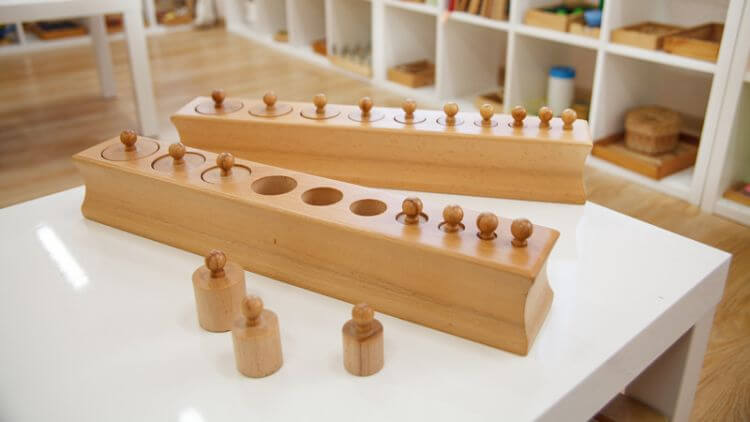
There are four different cylinder blocks. Maria Montessori described the cylinder blocks as such:
(A cylinder block is) a block in which solid geometric forms are set. Into corresponding holes in the block are set ten little wooden cylinders, the bases diminishing gradually about the millimetres. The game consists in taking the cylinders out of their places, putting them on the table, mixing them, and then putting each one back in its own place. The aim is to educate the eye to the differential perception of dimensions.
The Montessori Method, pg. 169
To work with this Montessori activity, the child carries it to a rug or a table. The next step is to remove all the cylinders and mix them up. The child then begins the scientific process.
Step 1: Observation and Questioning
With all the cylinders out of the block, the child then starts from the space on the left (which is usually the one with either the thickest or the deepest hole) and develops the question: “Which piece fits in this hole?” While this is a fairly simple and obvious question to us, as adults, and the answer is usually obvious to us, as adults, the question to a three-year-old child peaks their interest. The child then moves on to the second stage of the scientific method.

Step 2: Prediction / Hypothesis
At this stage of working with the material, the child looks at each cylinder and decides which piece they believe fits in that hole. While this may, again, seem like an easy task for adults, children often do not notice the importance of choosing the exact right piece. When children begin, many do not even think about this question and just seem to grab the first piece their eye focuses on. While this process is often skipped in the early stages, it becomes commonplace as the child develops and learns to focus more on the material.
Step 3: Gathering Data (Experimenting with Montessori Sensorial Materials)
Now it is time for the child to take the piece they chose and put it into the hole in the cylinder block. What I have found through my many years of teaching is the many ways children enjoy doing this. Some prefer to take their time and look at each cylinder, which is a key aspect of what I show the children. Others prefer to trace the hole with their finger and trace various pieces, which is something I also show when I first demonstrate the material. Another child might just grab the first piece they see and try it. Looking at this through the eyes of learning the scientific method, the child is essentially taking the first piece of information and applying it to the activity they are working on.

Step 4: Analyzing the Data
After the child has put the cylinder back in the hole, the analysis is just a simple question: does it fit in the hole? Many children skip this question, even if it does not fit. Often times, they will leave a piece in the wrong hole. They will move on to the next hole, start with the question of which one fits, form the hypothesis, and put the cylinder in the hole. Even if they got most of the other cylinders correct, there will be point where at least one cylinder simply does not fit into the hole. As for most toys or educational materials marketed to schools, if the child makes a mistake, they can simply move on and forget about the mistake. This is not so with the cylinder blocks. If the child makes a mistake with this activity, it cannot be completed.
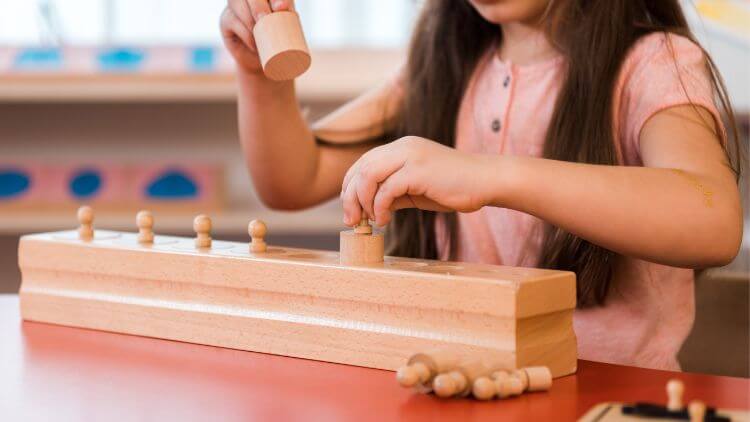
Step 5: Draw Conclusions
The conclusion is whether the material was done correctly. In the case of the cylinder blocks, it is done correctly if all ten cylinders fit into the block. If it is done improperly, there is at least one cylinder that does not fit. The beauty of Montessori sensorial materials and other activities is that they are set up so the child has to go back through the same process to come to the solution of the problem.
Learning the Scientific Process Through the Use of Montessori Sensorial Materials Benefits Children in Future Grades
The cylinder block material is just one of countless Montessori activities that engrain the scientific method into the child’s understanding. As the child moves forward into the Elementary years, once the scientific method is fully laid out and explained, the child already has an innate understanding of this process and readily accepts it. These five steps have been, after all, a part of their entire educational system.
Try Montessori Laboratory’s Hands-on Science Lessons for Free
Are you interested in seeing what Montessori Laboratory’s big-picture lessons, hands-on experiments, and engaging science activities are all about? Check out the free lessons below!
The First Great Lesson
Where did the stars come from? And the Sun? How was our Earth created? And what about the rest of…
Combining and Separating
Why does sand settle to the bottom of the ocean, but salt mixes in? How do people get sea salt out…
How Did Humans Discover Fire?
When did we start using fire? What 3 components does fire need to burn?
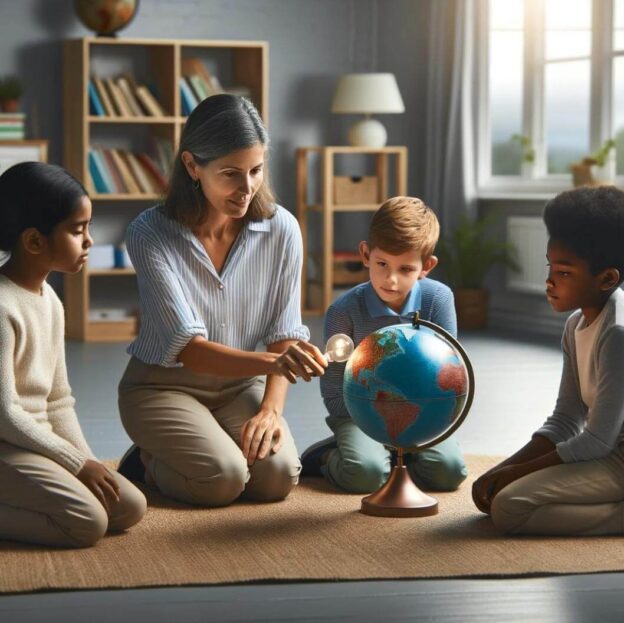


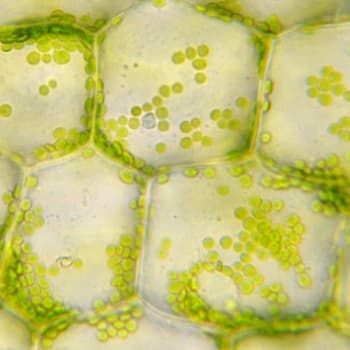


Responses